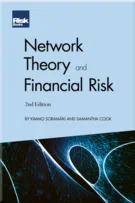Modern Scenario Analysis
Modern Scenario Analysis
Introduction
Operational Risk in Four Letters
An Invisible Framework
Small is Beautiful in OpRisk Management
The Business Value of ORM
How to Minimise ‘People Risk’
The Missing Piece
Risk Appetite and Framework
From Russian Roulette to Overcautious Decision-making
The Importance of Preventive KRIs
How to Build Preventive Key Risk Indicators
Unlocking KRIs
Six Steps for Preventive KRIs
Have Your Cake and Eat It
Conduct, Not ‘Conduct Risk’
How to Manage Incentives
Is Reputation Risk Overstated?
What Regulators Want
Conduct & Culture
OpRisk Takes Forward Steps at OpRisk Europe 2014
Modern Scenario Analysis
The Rogue’s Path
Rogue Trading No Training: The Connections
What Brexit Teaches OpRisk
OpRisk Survey Shows the Insidious Effects of Political Risk
Discarding the AMA Could Become a Source of OpRisk
UCL Research Shows that SMA Reforms Introduces Capital Instability and Discourages Risk Management
Memo to Bank CEOs: Treat OpRisk with More Respect
Don’t Let the SMA Kill OpRisk Modelling
As one of the four pillars of the advanced measurement approach, scenario analysis is a major compliance exercise, but it should be much more than this. In times of volatility and uncertain competitive, regulatory and technological environments, scenarios are an important way to assess business resilience.
Just as risk identification is the first step of risk management, scenario identification is the first step of scenario analysis. Forget the ready-made lists from industry think-tanks and external providers, at least in the first instance. These lists are useful, but are no more than a common base: business continuity, data theft, cyber attacks, natural disasters, regulatory breaches, mis-selling, rogue trading... Sounds familiar? Of course it does. Everybody has the same list.
Alongside industry scenarios, firm-specific scenarios are most useful for senior management to detect and prevent potential shocks driven by internal factors. Identifying these idiosyncratic scenarios requires considering two structural risk drivers to a business: exposures and vulnerabilities.
Exposures are inherent to a firm’s business; they are its main clients, key distribution channels
Copyright Infopro Digital Limited. All rights reserved.
As outlined in our terms and conditions, https://www.infopro-digital.com/terms-and-conditions/subscriptions/ (point 2.4), printing is limited to a single copy.
If you would like to purchase additional rights please email info@risk.net
Copyright Infopro Digital Limited. All rights reserved.
You may share this content using our article tools. As outlined in our terms and conditions, https://www.infopro-digital.com/terms-and-conditions/subscriptions/ (clause 2.4), an Authorised User may only make one copy of the materials for their own personal use. You must also comply with the restrictions in clause 2.5.
If you would like to purchase additional rights please email info@risk.net









